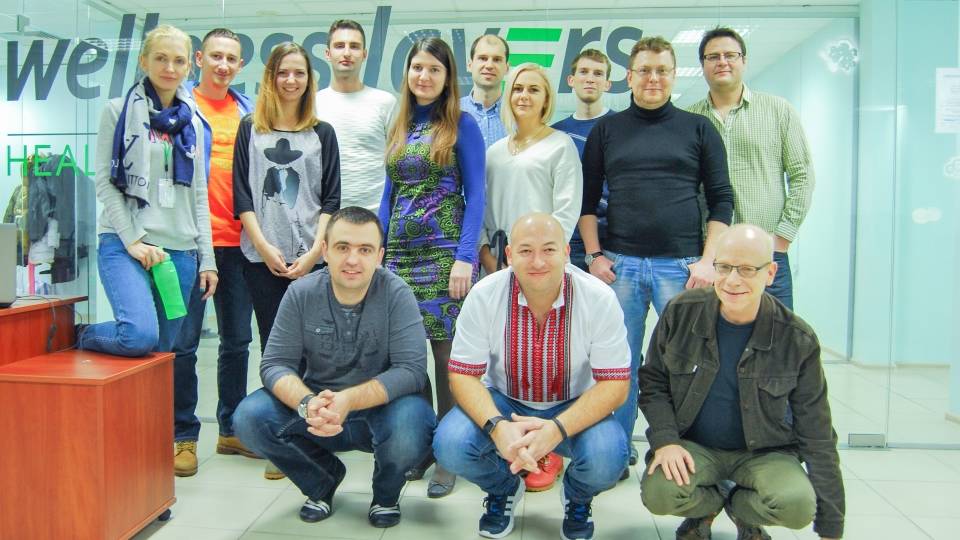
World’s top outsourcing software development trends for 2017
We live in a time where outsourcing is shaped by digital consumers. This sets new priorities and more complex business and technical challenges for the world’s contractors, especially for those who work on the cutting edge - in the tech industry.
Close relation to the tech world means that IT outsourcers need to develop at the same speed as software and hardware startups, or even better, to be one step ahead.
The US tech market is experiencing a drastic shortage of tech talent , as
companies want to hire staff, but the country simply doesn’t have enough
specialists.
Even very small startups can afford to get work done while still paying respectable rates to contractors anywhere around the world. But today businesses consider outsourcing rather as a means of ensuring quality rather than just a tool for cutting costs.
That’s why it’s important to predict what the future may hold for outsourcers, to be ready for changes and prepared to provide services with class. Tech companies, in their turn, need to stay tuned to understand how to outsource in a clever way.
Here are six tech outsourcing trends that we foresee for 2017.
US, UK, Germany, and Israel to seek more outsourcing opportunities
The US tech market is experiencing a drastic shortage of tech talent , as companies want to hire staff, but the country simply doesn’t have enough specialists.
According to the 2016 Talent Shortage Survey , 46 percent of US employers reported difficulties filling jobs, and IT staff rank second worldwide as the most problematic for employers to hire.
More and more software developers have started looking at the Eastern
European countries: Poland, Ukraine, Romania, and Belarus.
As for the Israeli IT industry, Bloomberg reports that is it lacking 20,000 tech people. When it comes to the UK tech industry, 57 percent of UK survey respondents cited access to talent as their most important public policy issue, according to research by Silicon Valley Bank.
This global shortage can force tech companies to open new markets and hire more contractors from abroad to seal the existing gap.
Eastern Europe to prevail as an outsourcing destination
Perhaps one of the most difficult decisions a growing company has to face is choosing which country to work with as an outsourcing partner. The important thing is to find a combination of good value and quality of work.
More and more software developers have started looking at the Eastern European
countries: Poland, Ukraine, Romania, and Belarus. Many major European
corporations have also started diverting the majority of their outsourced
projects to this region.
And it seems that this trend is set to grow, as more and more countries realize
the benefits of working with Eastern Europe.
Read about Kharkiv as a perfect location for offshore IT outsourcing in Ukraine
The level of engineering education in the former Soviet Union countries is quite high, and the number of technical universities is above average.
Ukrainian universities, for example, annually produce over 130,000 graduates, of which 36,000 obtain technical degrees, including some 15,000 in information technology-related, subjects, according to a recent Ukraine Digital News report .
Investment company Horizon Capital ranks Ukraine as 41st in the world for the quality of its university research and currently estimates the presence of around 90,000 IT specialists.
Considering the growing shortage of skilled workers in major European, US and Israeli markets, fast and flexible access to IT professionals gives companies the opportunity to remain competitive.
Tech outsourcing is getting more personal. Over the past few years, many
outsourcing companies have started setting dedicated teams for their
clients, handing those clients full management control over the employees
and projects they work on.
The education level has a major impact on the quality of work performed in these countries, but fees still remain 2-3 times lower than in Western Europe. While in Ukraine, a software engineer would cost from $1,300 to $4,300 a month, in Germany it ranges from $3,500 to $7,000 .
The popularity of Eastern European countries for outsourcing will only increase, as they can offer something more than just comparably low labor cost.
The time zone difference between major European markets and Eastern European countries is no more than two hours, compared to a 5.5 hour difference with India. Due to shorter distances, it’s also easier to have face-to-face meetings with a short and low-cost flight in case of emergency.
Dedicated Development Team model to prevail
Tech outsourcing is getting more personal. Over the past few years, many outsourcing companies have started setting dedicated teams for their clients, handing those clients full management control over the employees and projects they work on.
Outsourcers, in turn, concentrate on recruiting the right people, allocating them to their offices with all the required technical resources, and creating the right conditions to achieve particular results for particular companies. It is an outsourcer’s responsibility to find people who would correspond with the requirements, goals, and business culture of the customer.
This option also has a rather transparent and simple pricing system: each month the client pays the service provider a fixed amount of money that depends on the size and composition of the team.
Basically, this allows the client to hire a team in a country with less expensive labor, saving the cost of renting an office, as the people are already allocated to outsourcers’ premises.
Read about using the dedicated team outsourcing model
This model is normally used for long-term projects, where the future requirements are unclear and the scope may be changing frequently, or when startups simply need to be flexible in iterating on their initial product. The latter situation isn’t a rare thing. Steven Kaplan from the University of Chicago says 50 percent of startups broaden their initial offering, changing for something new.
Most classic startup literature, including books by Eric Ries , Steve Blank and David Kidder , teaches that almost any startup has to pivot.
Early adopters are integrating IoT into a broad spectrum of technologies and
business processes, many of which intersect with commonly outsourced
business functions: IT support, facilities management, and enterprise
resource planning.
And as startups will always have two main problems during their development - saving money and being flexible with staff count in the company - the dedicated team model looks like it's here to stay.
Volume of outsourcing for IoT to increase
The Internet of Things (IoT) has been shaking up the whole tech industry for several years. And although developing machine-to-machine services and devices could be the rocket science of our time, IoT will present a huge outsourcing opportunity.
With its development, IoT has brought a huge data influx along with new security concerns. Handling this requires experienced, and thus pricey specialists, who are good at both software and hardware development.
As IoT involves both physical devices and software components, with communication protocols and clouds thrown in, outsourcing for IoT developers is challenging. But at the same time, there are outsourcers that do a pretty good job.
What’s certain is that if more companies start hiring contractors, outsourcing could help tech companies to break through in IoT development by making it affordable and fast.
British telecom company Vodafone has published research saying that integrating IoT technologies into core business processes is surging; and 76 percent of organizations surveyed say IoT will be critical to their future success.
Early adopters are integrating IoT into a broad spectrum of technologies and business processes, many of which intersect with commonly outsourced business functions: IT support, facilities management, and enterprise resource planning.
TCS Global Trend Study shows the real IoT scale - 57 large tech companies (7 percent of the survey base) said they would spend $500 million or more on IoT initiatives during a fiscal year.
Investments and attention will grow proportionally, and IoT will be up and running at a rapid pace. This means that the volume of outsourcing, particularly for this field, will significantly increase over the next 3-4 years.
Cloud computing adopters to outrun other outsourcers
Despite all the benefits and conveniences, traditional IT outsourcing has always been quite cumbersome: servers, data centers, specifications. Cloud computing works quite differently, but offers a similar deal - the ability to simplify development and save money.
Although these two approaches differ heavily, it's possible to see them as part of a continuum - outsourcers can use cloud technologies themselves as part of their development toolkit. And many do so.
Cloud services have already become number one in the outsourcing market, grabbing 36 percent of it, according to an EY survey .
From here, its popularity will only grow. The fact that cloud services are getting so simple to use will just feed the fire.
Today anyone can build, test, and deploy mobile applications using public clouds like Amazon Web Services or Microsoft Azure without the complexity of building and maintaining the infrastructure yourself.
Doors will certainly open more often for those outsourcers that harness clouds sooner than others.
Outsourcing of test automation to boom
Test automation is a rapidly growing area of outsourcing in IT, and this looks set to continue.
Software test automation is one of the smartest ways to reduce routine manual testing, lower the cost, and speed up the process of testing of web, mobile and desktop solutions of any scale.
Tech companies usually opt for outsourcing of test automation because they don’t have in-house testers, they lack the necessary software, or they simply want to save money. Outsourcers as vendors, in turn, have both the software and the skilled talent to program it.
Moreover, automation eliminates the human factor, and hence human error.
As the code is modified, it has to be tested on different platforms in different scenarios. This can be exhausting for a human, but not for a machine: when some defects may easily slip away from a tester’s eye, a testing automated program oversees every small detail.
The future is about machines :)
Written by Denys Krasnikov



